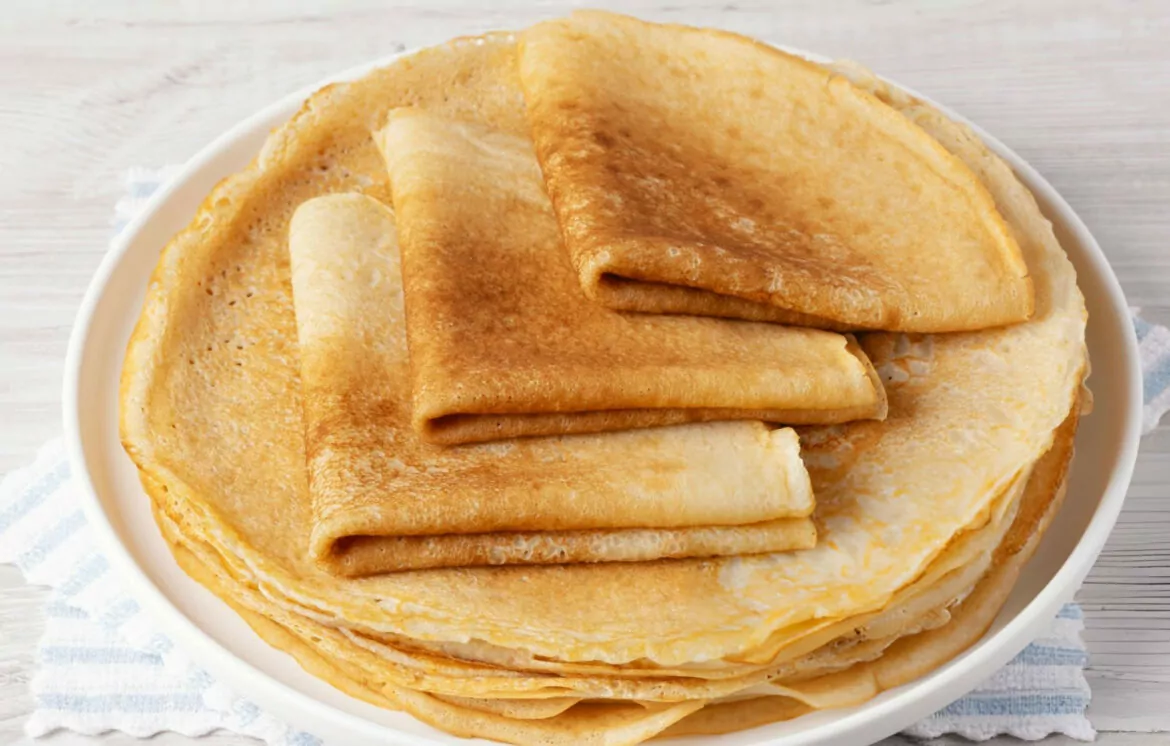There’s something undeniably charming about a well-made crepe. Its thin, delicate texture provides a versatile canvas, whether you’re in the mood for something sweet or savory. What sets crepes apart from other pancakes is their lightness and elegance. Unlike their thicker counterparts, crepes can be folded, rolled, or layered with ease, allowing for a delightful range of culinary possibilities. This basic crepe recipe is perfect for both beginners and seasoned cooks. It’s a must-try for anyone looking to master a classic that can be transformed into countless variations.
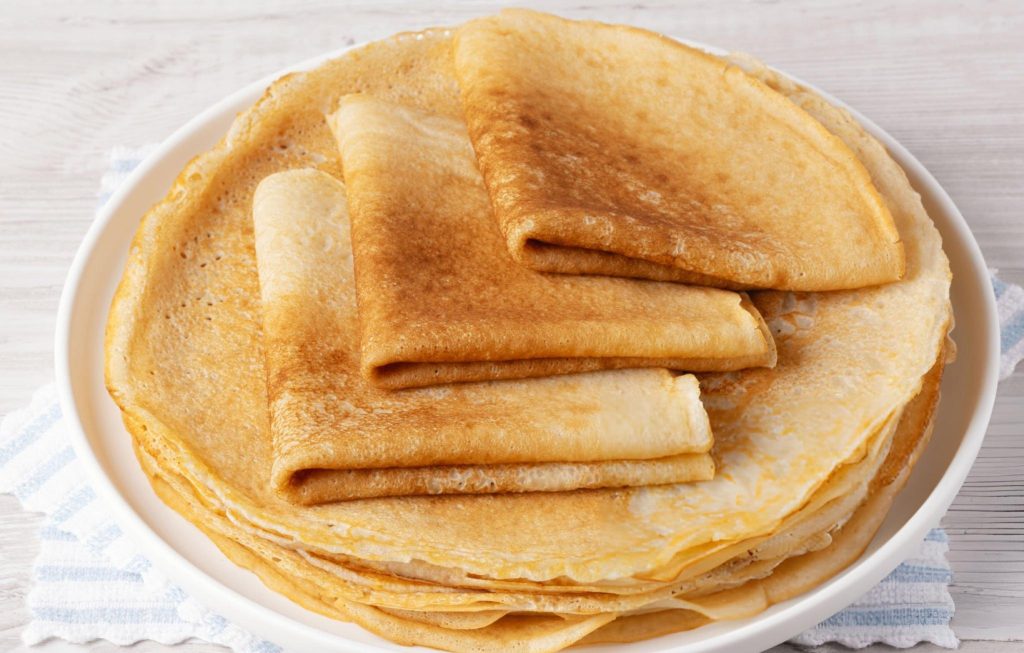
Gathering Your Ingredients and Tools
Creating the perfect crepe begins with gathering the right ingredients and tools. The essentials include 240ml of milk, 2 eggs, 1 teaspoon of caster sugar, 1 cup (150g) of plain flour, a pinch of salt, and melted butter for greasing the pan. Each ingredient plays a crucial role in achieving the ideal texture and flavor. Milk provides moisture and helps bind the ingredients, while eggs contribute richness and structure. The small amount of sugar adds just a touch of sweetness, balancing the flavors without overwhelming the delicate nature of the crepe.
Equally important are the tools you use. A good non-stick crepe pan or a frypan is essential for ensuring even cooking and easy flipping. A 16cm pan is recommended for this recipe, as it produces crepes that are perfectly sized for individual servings. Additionally, having a jug for the batter, a metal spatula for flipping, and a piece of paper towel for greasing will make the process smoother and more enjoyable.
Step-by-Step Guide to Making the Batter
Creating the crepe batter is a straightforward process, but the order in which you combine the ingredients is key to achieving the best results. Start by placing the flour, sugar, milk, and eggs into a food processor or blender, along with a pinch of salt. Blending the ingredients together not only ensures they are well incorporated but also aerates the mixture, leading to lighter crepes. The batter should be smooth, without any lumps. For a more refined texture, strain the batter into a jug. This step removes any remaining lumps and gives the crepes a silky finish.
Once the batter is prepared, it’s important to let it rest for about 30 minutes at room temperature. This resting period allows the flour to fully absorb the liquid, resulting in a more tender crepe. It also gives the gluten in the flour time to relax, which prevents the crepes from becoming tough. The result is a batter that spreads more easily in the pan and cooks evenly.
Mastering the Art of Cooking Crepes
Cooking crepes might seem intimidating, but with a few simple tips, you’ll be flipping them like a pro in no time. Start by preparing your pan. Use a piece of paper towel dipped in melted butter to lightly grease the base of your non-stick pan. The goal is to achieve a thin, even layer of butter that prevents the crepe from sticking without making it greasy.
Once the pan is heated over medium heat, pour in just enough batter to cover the base. Tilt the pan quickly to ensure the batter spreads evenly, forming a thin, uniform layer. If there’s any excess batter, pour it back into the jug to avoid overly thick crepes. Cook the crepe for about a minute, until the underside is golden brown. Carefully slide a metal spatula under the crepe and flip it to cook the other side for just under a minute. The second side will cook faster, so keep a close eye on it to prevent burning.
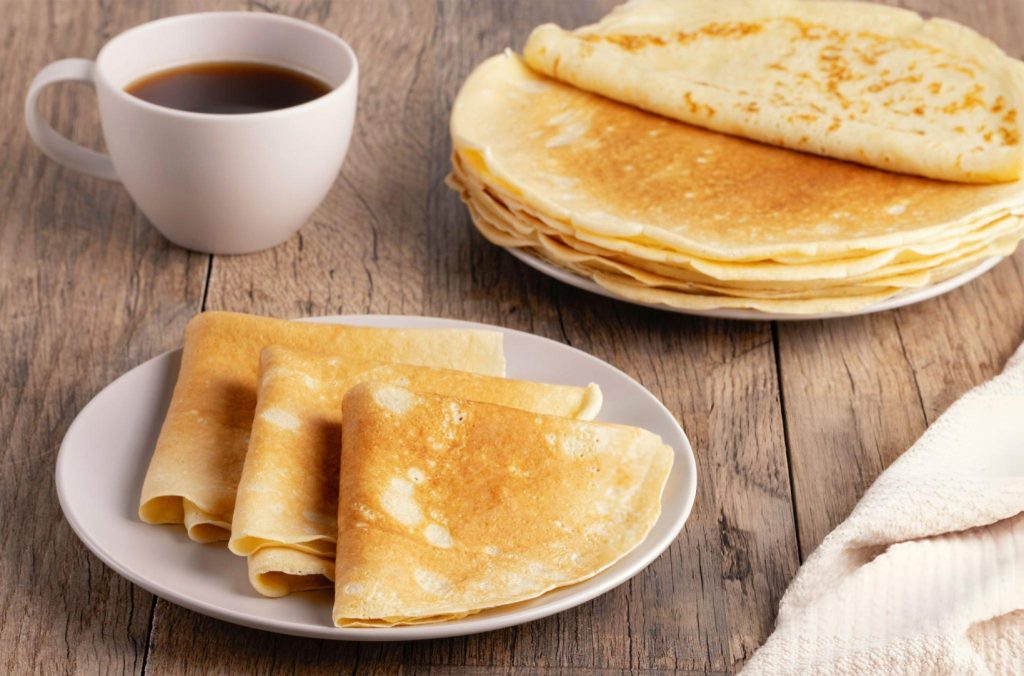
Recipe Tips
- How to Adjust Batter Consistency Based on Your Preference: If you prefer thinner crepes, you can add a little more milk to the batter. For thicker crepes, reduce the milk slightly. The key is to find the balance that suits your taste and the type of crepes you’re making.
- Common Mistakes to Avoid When Cooking Crepes: Avoid overmixing the batter, as this can lead to tough crepes. Additionally, make sure the pan is properly heated before adding the batter, and resist the urge to flip the crepe too early, which can cause it to tear.
- Tips for Keeping Crepes Warm and Fresh: To keep your crepes warm as you cook the rest of the batch, stack them on a plate and cover them with foil. You can also keep them in a warm oven (about 90°C or 200°F) if you’re making a large batch.
What to Serve With This Recipe
Crepes are incredibly versatile and can be paired with a wide variety of fillings and sides. For sweet options, consider filling them with Nutella, fresh berries, whipped cream, or even a simple dusting of powdered sugar. Savory crepes can be stuffed with ham and cheese, sautéed mushrooms, or spinach and feta. The possibilities are endless, and the choice is entirely up to your taste and the occasion.
When it comes to complementary side dishes, fresh fruits like strawberries or bananas work wonderfully with sweet crepes, while a side of yogurt adds a creamy contrast. For savory crepes, a simple green salad or roasted vegetables make an excellent accompaniment. To round out your meal, consider pairing your crepes with a suitable beverage—coffee, tea, or a glass of wine, depending on the filling.
Frequently Asked Questions
- Can I Make the Batter in Advance? Yes, you can prepare the batter up to a day in advance. Store it in the refrigerator and give it a quick stir before using it.
- What’s the Best Way to Store Leftover Crepes? Leftover crepes can be stacked with a piece of parchment paper between each one, then wrapped tightly in plastic wrap or stored in an airtight container in the refrigerator. They can also be frozen for up to a month.
- How Do I Prevent My Crepes from Sticking to the Pan? Ensure your pan is well-greased and properly heated before adding the batter. Using a non-stick pan is also crucial for preventing sticking.
Serving Suggestions
When it comes to presenting your crepes, simplicity is key. A stack of golden crepes, served warm with your favorite toppings, makes for a beautiful and delicious presentation. Whether you’re hosting a brunch or preparing a quick dessert, crepes are sure to impress.
Don’t be afraid to get creative with your fillings and toppings. Encourage your guests to experiment with different combinations, making each crepe a unique and personalized treat. Whether you stick to the basics or explore more adventurous flavors, this basic crepe recipe is the perfect starting point for a culinary journey full of endless possibilities.
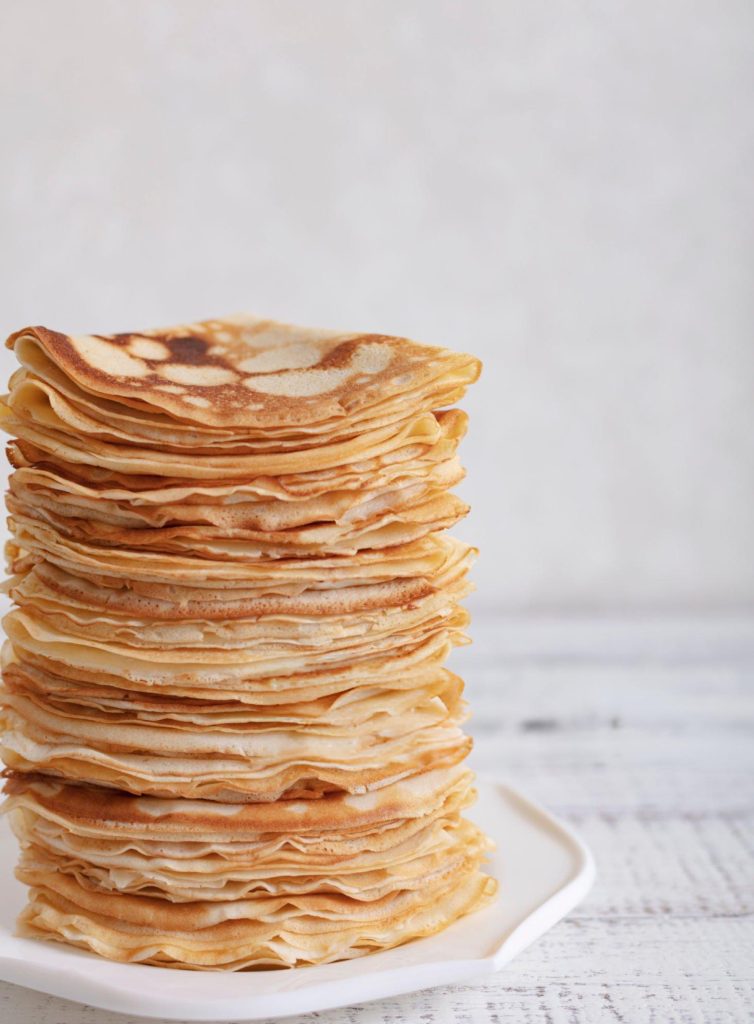
Ingredients
- 240ml milk
- 2 eggs
- 1 tsp caster sugar
- 1 cup (150g) plain flour
- A pinch of salt
- Melted butter, for greasing
Instructions
In a food processor or blender, combine the flour, sugar, milk, and eggs along with a pinch of salt. Blend the mixture until it reaches a smooth consistency. For a refined texture, strain the batter into a jug. Cover the jug and let the batter rest for 30 minutes at room temperature.
Heat a 16cm non-stick crepe pan or frypan over medium heat. Lightly grease the base using a piece of paper towel dipped in melted butter. Once the pan is hot, pour in enough batter to just cover the base, tilting the pan to ensure the batter forms a thin, even layer. If there’s any excess batter, pour it back into the jug. Cook the crepe for approximately 1 minute, or until the underside turns golden brown. Carefully flip the crepe using a metal spatula, cooking the other side for just under a minute until it, too, is golden.
Transfer the cooked crepe to a plate, covering it with foil to keep warm. Continue the process with the remaining batter, stacking the crepes on the plate as they are cooked.
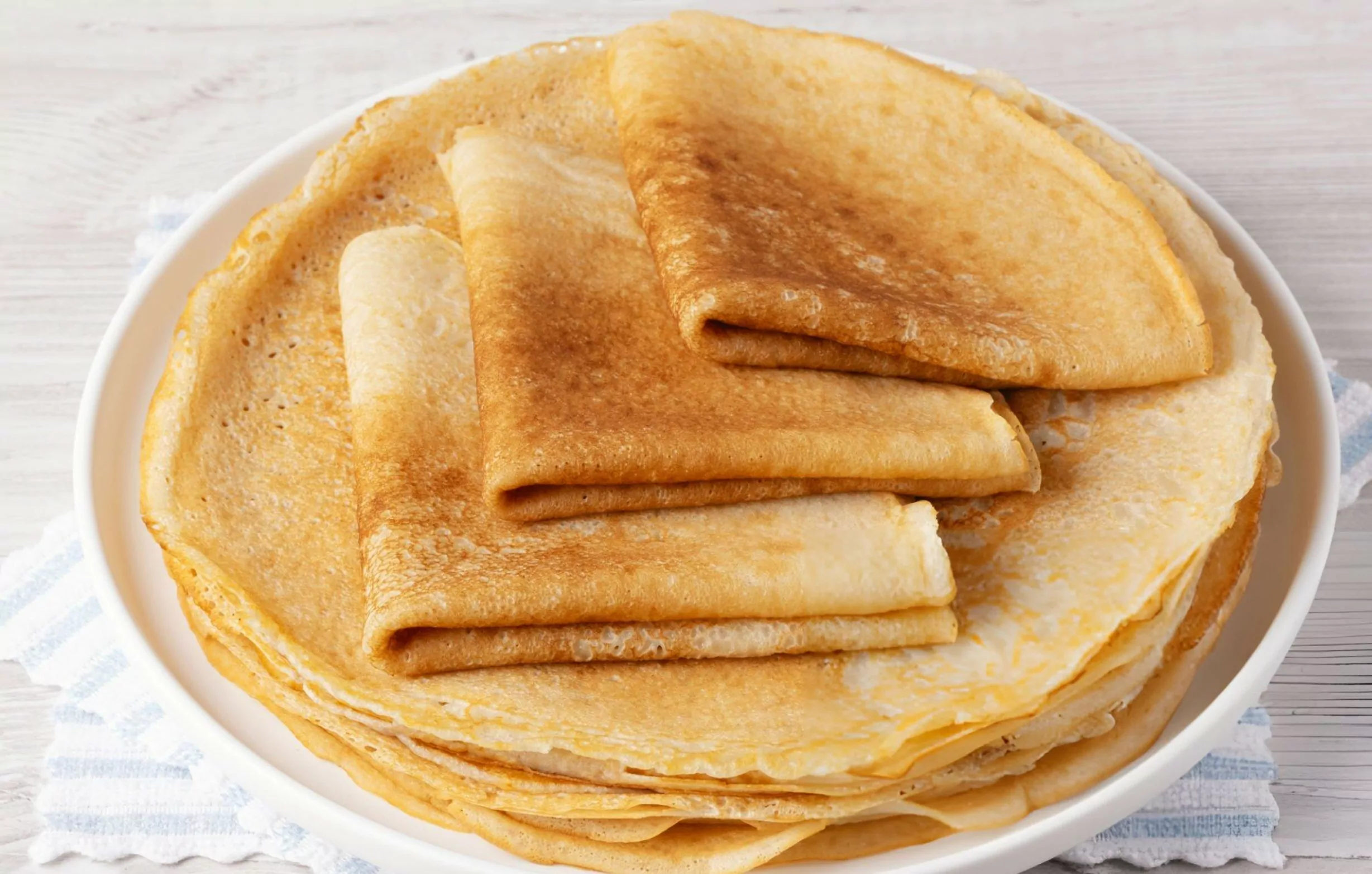
Basic Crepes Recipe
Ingredients
- 240 ml milk
- 2 eggs
- 1 tsp caster sugar
- 1 cup 150g plain flour
- A pinch of salt
- Melted butter for greasing
Instructions
- In a food processor or blender, combine the flour, sugar, milk, and eggs along with a pinch of salt. Blend the mixture until it reaches a smooth consistency. For a refined texture, strain the batter into a jug. Cover the jug and let the batter rest for 30 minutes at room temperature.
- Heat a 16cm non-stick crepe pan or frypan over medium heat. Lightly grease the base using a piece of paper towel dipped in melted butter. Once the pan is hot, pour in enough batter to just cover the base, tilting the pan to ensure the batter forms a thin, even layer. If there’s any excess batter, pour it back into the jug. Cook the crepe for approximately 1 minute, or until the underside turns golden brown. Carefully flip the crepe using a metal spatula, cooking the other side for just under a minute until it, too, is golden.
- Transfer the cooked crepe to a plate, covering it with foil to keep warm. Continue the process with the remaining batter, stacking the crepes on the plate as they are cooked.

